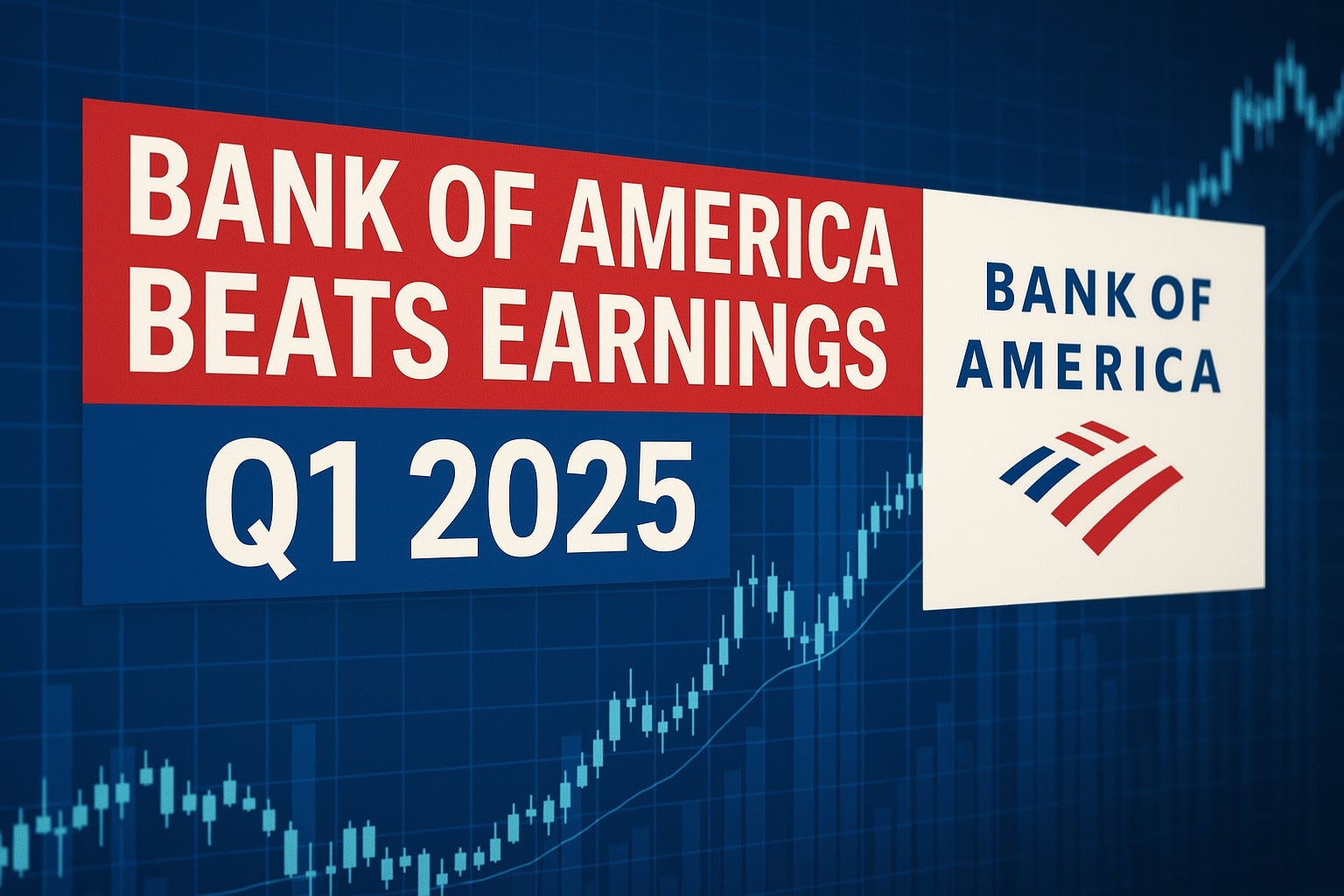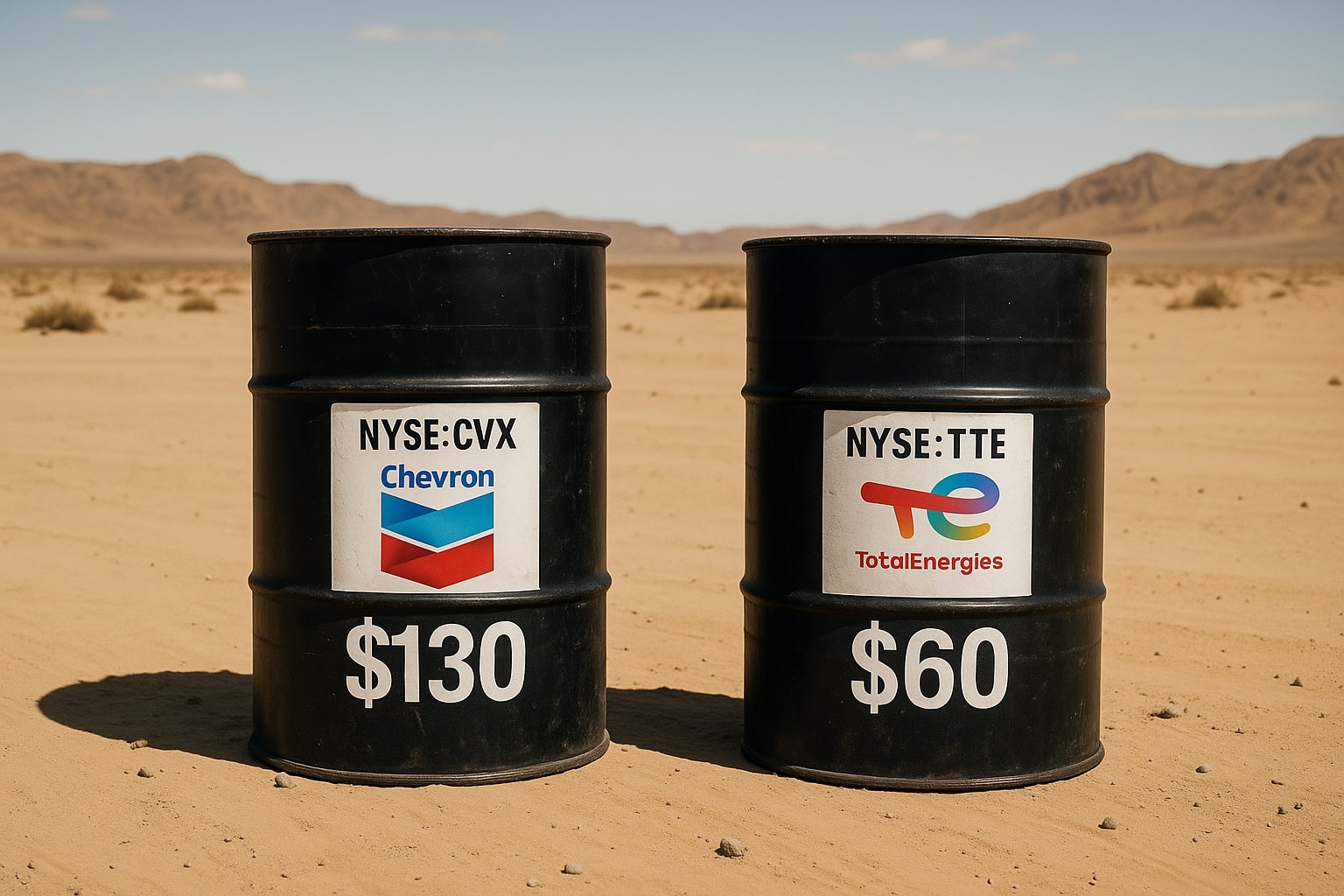
Bank of America (NYSE:BAC) Beats Q1 Earnings, Stock at $36.39—Ready to Rally?
With net income soaring to $7.4B, EPS at $0.90, and a bargain valuation—is BAC stock your ticket to 24.7% gains? | That's TradingNEWS
Bank of America (NYSE:BAC) Delivers Strong Q1 Earnings at $36.39—A Deep Dive into Profitability, Risks, and Valuation
Stellar Q1 Earnings Performance for NYSE:BAC at $36.39 Share Price
Bank of America Corporation (NYSE:BAC) demonstrated an exceptional financial performance in the first quarter of 2025, surpassing market expectations with robust profitability metrics. The bank reported a net income of $7.4 billion, representing an impressive 11% increase year-over-year. Earnings per share (EPS) climbed significantly to $0.90, comfortably beating analyst forecasts of $0.82 by nearly 9.8%. These stellar results were largely driven by substantial growth in net interest income (NII), which reached $14.6 billion, reflecting a healthy 2.8% increase compared to the previous year and a notable 0.7% sequential improvement.
An essential driver behind this solid NII growth was Bank of America's effective management of its deposit costs, reducing expenses despite volatile market conditions. Moreover, the bank experienced robust trading revenue gains, particularly within equities trading, where income surged 17% year-over-year to $2.2 billion. This revenue boost benefited from increased market volatility, a direct consequence of the ongoing tariff tensions, demonstrating the bank's capability to effectively leverage difficult economic environments into profitable outcomes.
Asset Quality Robustness Indicates Minimal Recession Concerns for NYSE:BAC
Contrary to broader market concerns about economic downturn risks due to trade wars and tariff hikes, Bank of America (NYSE:BAC) showcased resilient asset quality throughout Q1 2025. The bank's net charge-offs, a crucial indicator for assessing credit quality and recession risks, notably declined by approximately 3.1% year-over-year, amounting to just $1.45 billion. This improvement marks the second consecutive quarter of declining charge-off ratios, signaling stable consumer and commercial credit performance. The controlled net charge-off environment, despite macroeconomic pressures, demonstrates BAC’s adeptness in maintaining high-quality loan portfolios amid turbulent financial landscapes.
Furthermore, BAC's allowance for loan losses remained adequately conservative, standing firmly at 1.20% of total loans, an indicator that the bank prudently reserves capital against potential future credit deterioration. Although consumer credit card losses slightly increased to 4.05% from 3.79% in the prior quarter, these levels remain manageable and broadly within historical norms, further reinforcing the overall health and resilience of BAC’s lending activities.
Bank of America’s Valuation at $36.39 Reflects Attractive Investment Opportunity
At the current share price of $36.39, BAC stock trades just slightly above book value, presenting investors with an attractive entry point. Compared to its peer group—including JPMorgan Chase and Wells Fargo—BAC’s price-to-book ratio is significantly lower, hovering around 1.03x compared to Wells Fargo’s higher valuation of approximately 2.20x. Historical valuation analyses reveal that BAC typically commands a premium of 20% to 30% above its book value; thus, the current minimal 3% premium provides substantial potential for upward revaluation.
From an earnings perspective, BAC is currently priced at a forward P/E ratio of roughly 10.29x, notably lower than JPMorgan Chase's 12.63x. Such relative undervaluation underscores the compelling nature of BAC stock as a value-oriented investment. Furthermore, BAC’s consistent growth in book value, which reached $36.39 per share in Q1, underscores its intrinsic growth capabilities. Assuming BAC returns to its historical premium valuation, shares could realistically see intrinsic values in the range of $44 to $47, representing a potential upside between 20% and 30% from current levels.
Trading and Technical Considerations for NYSE:BAC Stock
While fundamental aspects point to bullish potential, technical analysis adds layers of nuance to the current investment narrative for BAC at $36.39. Recent price action reveals clear resistance levels established around $39.20, corresponding closely with previous support-turned-resistance zones. A breach above this critical threshold could lead to rapid appreciation toward $40.60 and higher, facilitated by a noted price gap.
On the bearish side, however, BAC recently completed a head-and-shoulders technical pattern with a breakdown below $38.74, reaching short-term lows near $36.78. Such bearish formations suggest possible near-term volatility. Yet, the significant drop in valuation multiples and the strong fundamental outlook mitigate much of this downside risk, positioning BAC for potential recovery if macroeconomic conditions stabilize or improve in coming months.
Insider Activity: Bank of America’s Management Confidence at Current Price Levels
Recent insider transaction data for Bank of America (NYSE:BAC), accessible on its insider transactions page, shows limited insider selling activity, suggesting management’s confidence in the bank’s current valuation and future profitability. Typically, a lack of substantial insider selling or even moderate insider purchasing can signal an internal belief in undervaluation, enhancing the bullish argument for BAC at its current price point of $36.39 per share.
Risks and Potential Headwinds for NYSE:BAC
Despite the optimistic outlook derived from robust earnings and attractive valuation metrics, several risk factors warrant investor consideration. Notably, a recent legal settlement with the FDIC for approximately $540.3 million could slightly dent profitability in the short term. Moreover, ongoing tariff disputes continue to loom as a macroeconomic threat, potentially leading to broader economic impacts or influencing Federal Reserve policies regarding interest rates.
Specifically, if tariffs escalate significantly, the resultant inflationary pressures might constrain the Fed’s capacity to reduce interest rates, thereby limiting potential growth in net interest income—currently forecasted optimistically at around $15.5 to $15.7 billion for FY2025. Conversely, accelerated Fed rate cuts in response to economic slowdowns could also negatively impact net interest margins, highlighting the delicate balance BAC must maintain amid uncertain policy environments.
Decisive Investment Perspective: Bullish Rating on NYSE:BAC at Current Valuation
Considering all analyzed aspects—impressive earnings growth, superior asset quality, strategic operational management, attractive relative and historical valuation metrics, and manageable risk factors—Bank of America Corporation (NYSE:BAC) presents a highly compelling investment opportunity at its current market price of $36.39 per share.
The powerful combination of a proven track record of resilience during macroeconomic uncertainty, coupled with BAC’s clear ability to grow net interest income and capital appreciation, makes this stock a compelling buy. Investors seeking solid value opportunities within the banking sector could find BAC's undervalued pricing particularly attractive, especially given the significant upside potential of 20-30% should historical valuation norms return.
Thus, given the robust fundamental backdrop, manageable risk environment, and significantly attractive current valuation levels, Bank of America (NYSE:BAC) earns a strong BUY recommendation at its current $36.39 share price, backed by a detailed, fact-driven investment analysis.
















